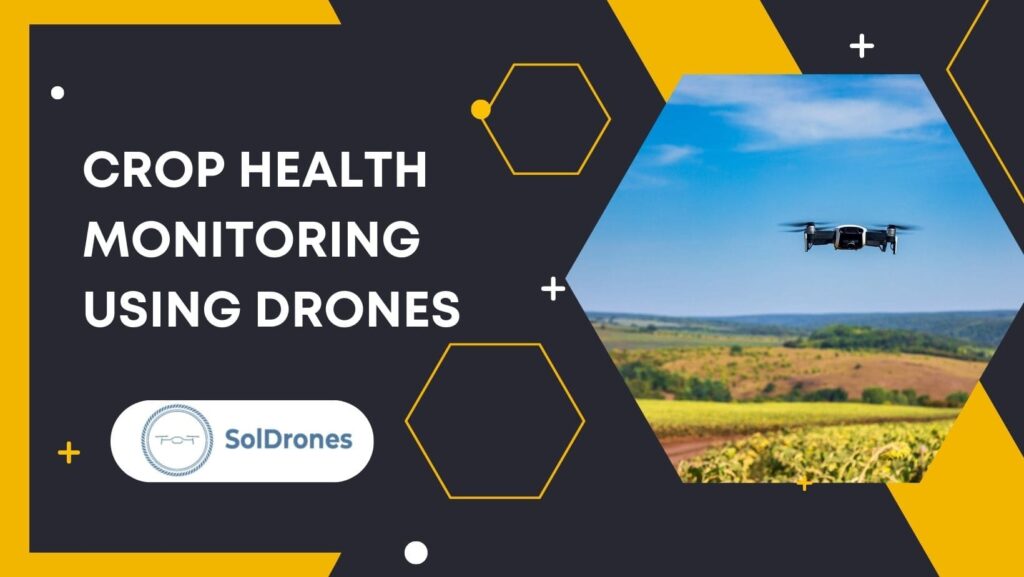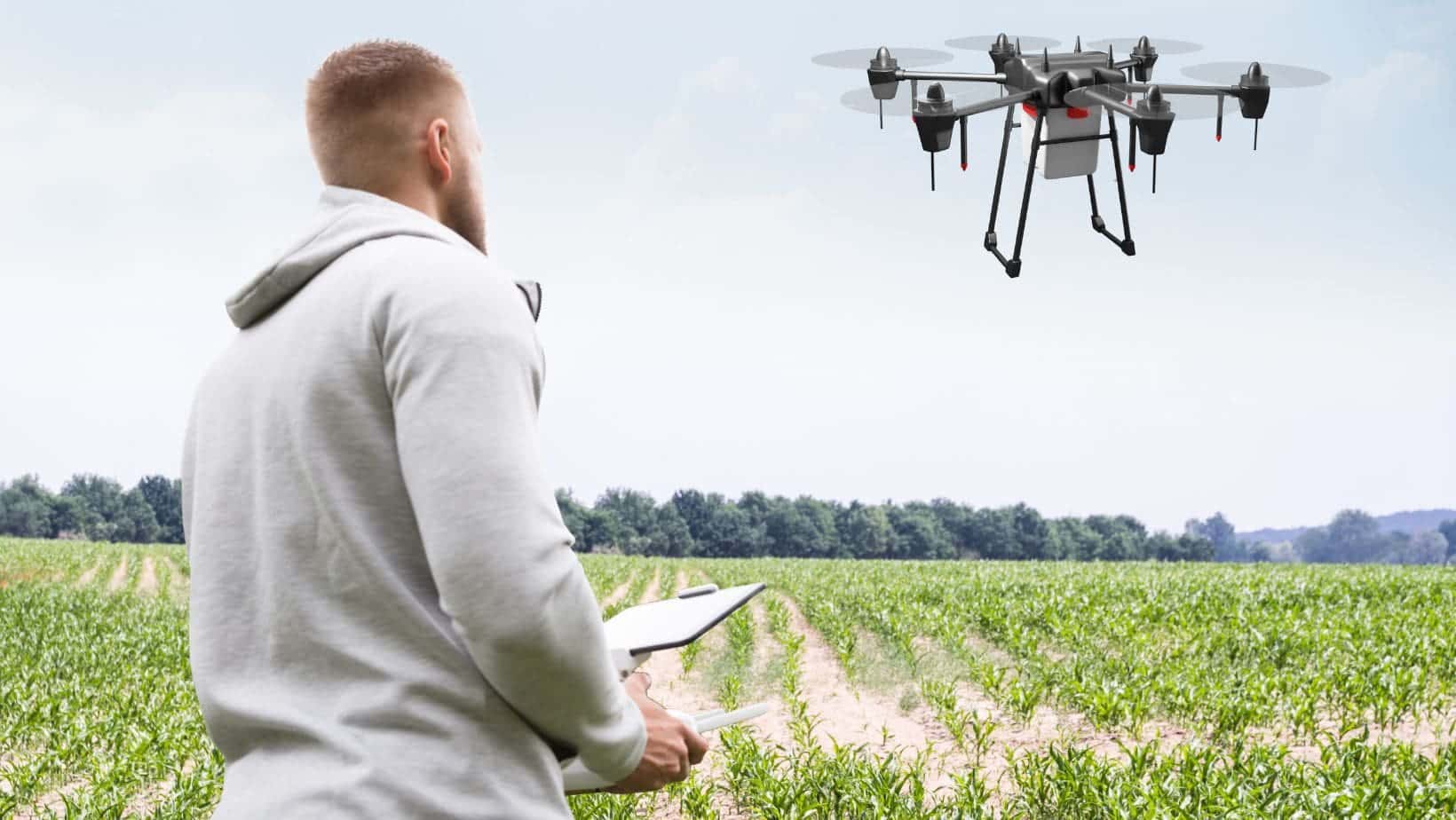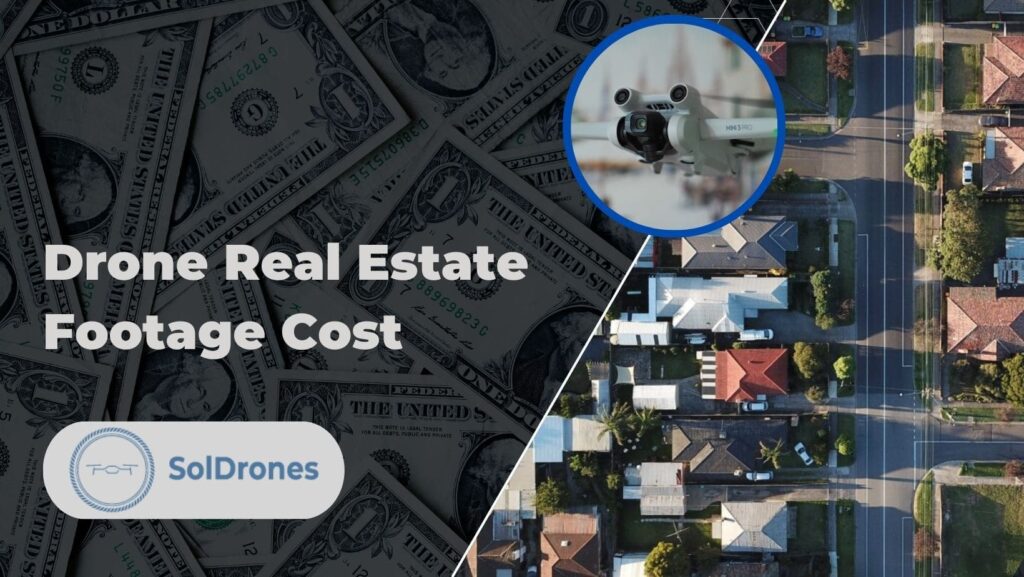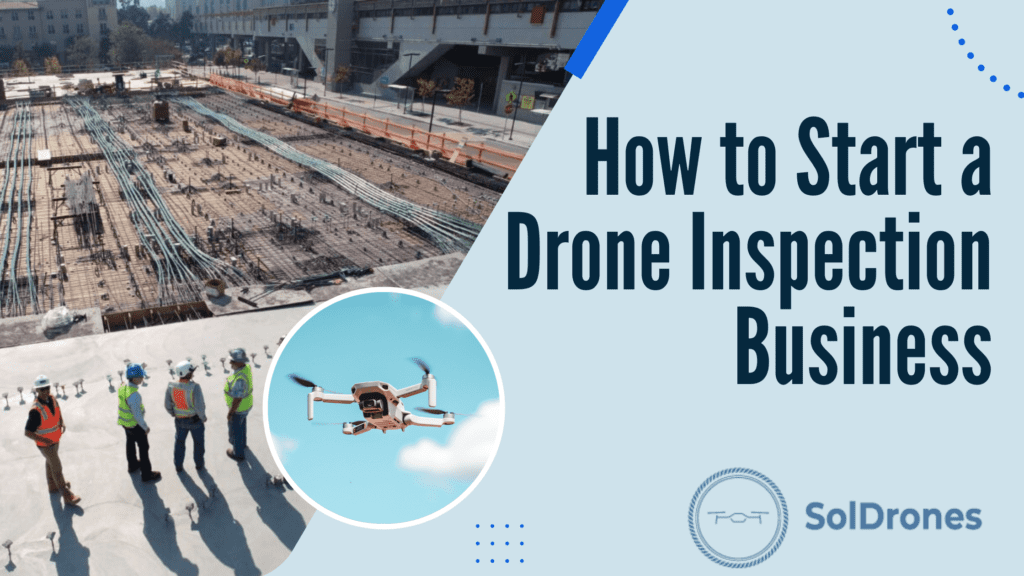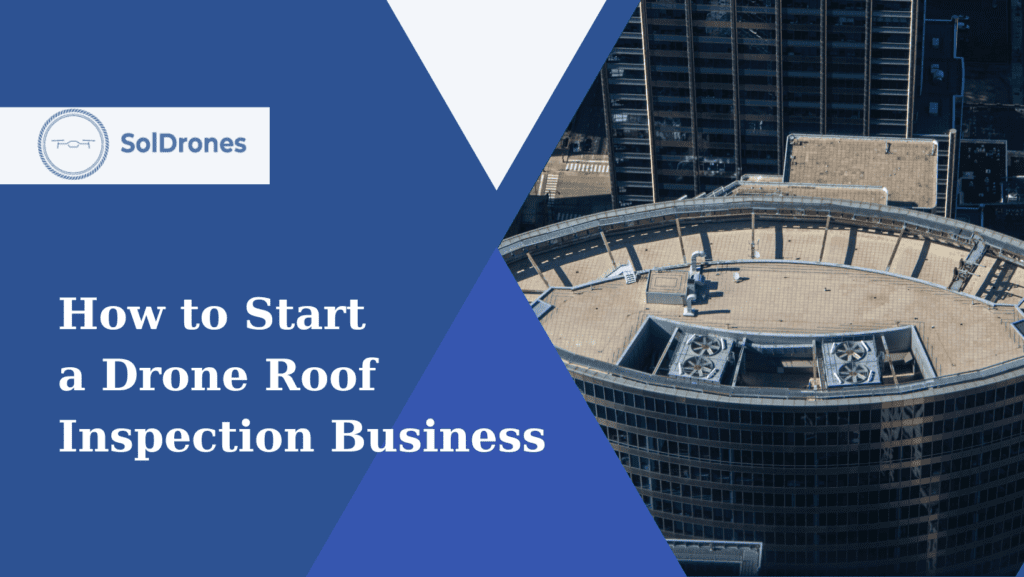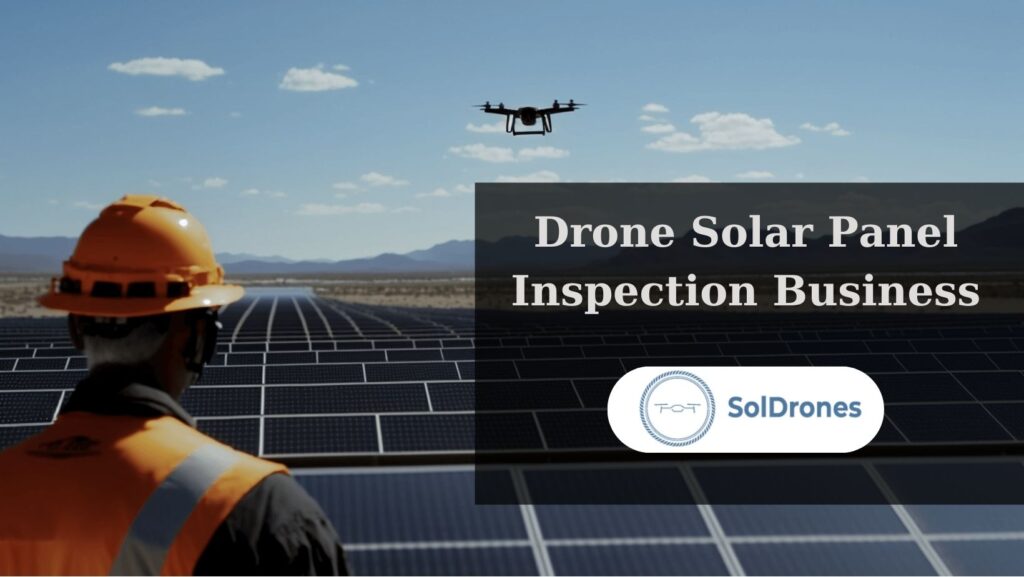With global population numbers skyrocketing, agricultural food production is at the forefront of challenges that need timely solutions.
Farm management has always had challenges, particularly when it comes to monitoring the health of crops. Some farms are hundreds of acres and it can be merely impossible to monitor the health of all crops each season.
Farmers are turning toward using drones, or unmanned aerial vehicles (UAVs), to assist their farm operations
For this very reason, more and more farmers and agricultural specialists are turning toward using drones, or unmanned aerial vehicles (UAVs), to assist their farm operations and crop monitoring.
If you’re involved in agriculture and have goals of maximizing the production of farms, this article is just for you.
Our team has heavily researched the technological advancements underway in the agricultural industry to develop solutions that you can benefit from.
Article Highlights
- Real-time crop health data from drones revolutionizes agriculture by enabling efficient and precise farming solutions.
- Drones improve efficiency, cost savings, and data collection but also confront legal limits, weather reliance, and privacy problems.
- Drones will pollinate, reforest, and enhance technology in agriculture, providing a sustainable and progressive era.
Evolution of Crop Monitoring
Before the digital age took over, farmers had their tried-and-true methods to ensure their crops thrived. But as dependable as they might have been, these methods had their fair share of limitations.
Traditional vs. Drone-assisted Crop Monitoring
| Aspect | Traditional Methods | Drone-assisted Monitoring |
| Coverage | Limited to accessible areas; often misses spots due to human error. | Comprehensive range of entire fields, even in hard-to-reach areas. |
| Time Consumption | Requires long hours for manual inspection and data collection | Rapid data collection in just a fraction of the time. |
| Data Accuracy | Prone to inaccuracies and subjective assessments. | Utilizes advanced sensors and cameras for precise data capture |
| Scalability | Difficult to scale for larger farms; requires more workforce. | Easily scalable, covering large areas efficiently. |
| Early Detection | May miss early signs of crop diseases or pests. | Detects early signs through thermal and multispectral imagery |
Visually inspecting vast acres of crops is a time-consuming task, and soil analysis takes time, too. The wait for results often meant farmers reacted more slowly to potential threats.
In stark contrast, drones streamline this process dramatically. They not only shortened the time frame but also heightened the accuracy of the information. With drone technology, the process transformed from reactive to proactive, ensuring healthier crops and more efficient agriculture practices.
The Revolution of Precision Agriculture
Video Credit: Geospatial World
Precision agriculture is more than just a buzzword in today’s farming landscape. At its core, it means using advanced technology to optimize agricultural practices, ensuring maximum yield and sustainability.
Within this revolution, drones have taken a leading role, offering aerial insights that were previously unimaginable. With their advanced sensors and imaging capabilities, drones provide detailed, real-time data that enables farmers to tailor their strategies to the unique needs of each parcel of land.
This boosts crop yields, conserves resources, and promotes eco-friendly farming. It’s a profound shift, blending the age-old wisdom of farming with cutting-edge technology, paving the way for a brighter and more sustainable agricultural future.
Essential Applications of Drones in Crop Monitoring
As the agriculture sector faces increasing demands and evolving challenges, the deployment of drones presents a transformative solution.
Drones are redefining how farmers approach various facets of farming, streamlining processes and enhancing results. We unpack some of the core benefits of using drones in agriculture below.
Real-time Data Collection
Drones, furnished with RGB cameras, thermal imaging, and multispectral imaging, empower farmers with immediate data. This technological marvel offers distinct advantages over traditional methods, particularly in terms of accuracy and rapidity of data collection.
Irrigation Management
Drones shine in their ability to discern over- and under-irrigated zones. This aerial perspective provides tangible benefits, ensuring robust crop health and promoting reasonable water use.
Plant Health Assessment
Integrating multispectral and hyperspectral sensors on drones takes plant health monitoring to a new dimension. Farmers can swiftly detect signs of unhealthy plants, ranging from nutrient deficiencies to drought stress and potential disease, allowing for timely interventions.
Spraying and Treatment
With drones, spraying fertilizers, pesticides, and herbicides achieves new precision. Such efficiency minimizes chemical wastage and shields the environment from potential adverse impacts.
Seed Planting
Drone-assisted planting stands out, especially in terrains that challenge traditional methods, making it a preferred choice for future-forward farmers.
The remarkable capabilities of drones in crop monitoring showcase their pivotal role in shaping the future of agriculture.
As you can see, it becomes evident that these innovations improve yield and efficiency and champion sustainable agricultural practices. Next, we’ll examine the technical intricacies of drone operations, underscoring the expertise required to harness their full potential.
Types of Drones Used in Crop Monitoring
It’s critical to understand the different types of drones that are being used in drone-assisted crop monitoring. We provide a few common types of drones below:
Fixed-Wing Drones
Fixed-wing drones, resembling miniature airplanes with rigid wings, have carved a niche for themselves as pioneers of aerial surveys in precision agriculture.
Their elongated flight times and high cruising speeds equip them to cover vast agricultural tracts efficiently.
These drones excel in mapping extensive farmlands and conducting comprehensive aerial surveys.
Notably, the eBee AG drone, designed by senseFly, stands out with its custom multispectral Parrot Sequoia camera, capturing detailed imagery across distinct spectral bands. This capability enables comprehensive crop health assessments, aiding farmers in making informed decisions.
Multi-Rotor Drones
Multi-rotor drones, aptly named for their multiple rotors, have become the go-to choice for tasks demanding precision and maneuverability. Their vertical takeoff and landing (VTOL) capabilities and the ability to hover in place make them ideal for tasks like crop spraying and detailed data acquisition.
The DJI Agras T40 is a notable player in this category, offering multifaceted agricultural solutions. Its capabilities range from surveying to precise crop spraying, showcasing the versatility of multi-rotor drones in modern agriculture.
Hybrid Drones
The newest entrants on the scene, hybrid drones, embody the fusion of fixed-wing and multi-rotor capabilities. These drones leverage the VTOL capabilities of multi-rotor counterparts while extending their range like fixed-wing drones.
This balance positions them as promising solutions for tasks requiring extensive coverage and precision.
The WingtraOne, crafted by Swiss company Wingtra, is a prime example of this innovation. Known for its high-precision capabilities, the WingtraOne offers versatility in navigating vast agricultural landscapes and addressing the evolving needs of modern farmers.
The Prominent Benefits of Drone-Assisted Crop Monitoring
A few of the most prominent benefits drones are providing to farming operations are as follows:
- Increased Efficiency: Drones take flight as time-saving champions, sweeping over vast expanses of farmland in a single graceful arc. Sensors and cameras performance of unparalleled efficiency. Where once hours were spent traversing fields on foot or by vehicle, drones provide a bird’s-eye view, capturing real-time data with the ease of a gentle breeze. A single flight now blankets hundreds of acres, delivering information at the speed of thought and revolutionizing the rhythm of modern farming.
- Cost Savings: In the heart of every farmer lies the desire for bountiful harvests and wise resource stewardship. Drones emerge as the guardians of this delicate balance, wielding the power of early detection like a vigilant sentry. Pests, diseases, and nutrient imbalances no longer obscure themselves, for drones illuminate their presence before they can seize the land. Precision interventions replace broad strokes, as farmers spot-treat afflicted areas instead of dousing entire fields in chemical remedies. This strategic dance of detection and response preserves resources, safeguards ecosystems, and graces farmers’ ledgers with fiscal prudence.
- Accurate Data: The canvas of modern farming is woven with data threads, each holding the promise of a healthier crop, a more efficient resource allocation, and a thriving ecosystem. Drones wield brushes laden with high-resolution imagery, painting a picture of precision agriculture that exceeds the limits of human sight. These images speak of soil health, plant vigor, and resource distribution, guiding farmers to apply interventions with an artist’s touch delicacy. The era of guesswork bows to the reign of accuracy as data transforms into action and fields yield a symphony of abundance.
- Risk Reduction: In the annals of agricultural history, tales of daring and danger are etched, recounting tasks that risked life and limb. Today, a new chapter unfolds, written by drones that soar above, unburdened by human frailty. Where manned aircraft once bore the weight of crop dusting, drones glide, showering fields with treatments that dance with precision. The danger and uncertainty of spraying from above give way to the grace and control of drones, an aerial ballet that safeguards crops and lives.
- Data Management: The data drones bring is not a torrent but a treasure trove, awaiting transformation into insights that guide decisions. Farmers step into the shoes of data managers, harnessing digital streams to unearth patterns and predict outcomes. Trends emerge from the depths, shedding light on the past, present, and potential future. Fields become the canvas upon which data-driven brushstrokes are painted, creating a tapestry of knowledge that fosters wise choices and prosperous outcomes.
In drone-assisted crop monitoring, benefits include efficiency, savings, accuracy, safety, and insights. These advantages highlight the significant role drones play in modern agriculture.
Addressing the Challenges in Drone-Assisted Crop Monitoring
As the horizon of drone-assisted crop monitoring stretches before us, navigating these challenges with precision and insight is essential.
Challenge | Navigation Strategy |
Regulatory Restrictions | Regulations govern the airspace where drones roam. The key lies in understanding the rules, securing the necessary permits, and aligning operations with legal frameworks. The sky, once limitless, now flourishes within defined boundaries. |
Data Management and Interpretation | The abundance of data is a boon, but its significance lies in its interpretation. Farmers must become stewards of information, refining their skills to extract actionable insights from the digital bounty they gather. The art of analysis turns raw data into decision-driving intelligence. |
Weather Dependence | Nature wields a mighty hand over drones, dictating when they can fly and when they must rest. Patience becomes the virtue as farmers and drone pilots synchronize their actions with weather patterns, ensuring the safety of operations and the quality of data collected. |
Technological Learning Curve | As drones weave into the fabric of farming, the learning curve beckons. Farmers accustomed to plows and planting must master flight paths and data analysis. Education becomes fuel, empowering those in the field to operate these aerial assistants with mastery. |
Addressing Privacy Concerns | The lofty gaze of drones is not without concerns, especially where farmland touches the boundaries of private homes. Privacy safeguards become paramount as drone operators navigate legal and ethical considerations, ensuring the sky remains a realm of progress, not intrusion. |
As challenges punctuate the journey, they also form stepping stones to innovation. Each challenge comes with the opportunity to adapt, learn, and create solutions that propel drone-assisted crop monitoring into a future shaped by advancement and responsibility.
Future Prospects of Crop Monitoring Using Drones
The horizon of possibilities for drones in agriculture stretches toward an exciting tomorrow, where innovation takes the lead and imagination sets the course.
Innovative Orchards: Pollination and Tree-Planting Drones
Visualize drones as observers but as the diligent workers of an agricultural symphony. These drones are transforming into pollinators, ensuring robust harvests through meticulous pollination.
Additionally, they’re heralds of reforestation, turning barren expenses into thriving woodlands with tree-planting precision. The future envisions these drones orchestrating the growth of sustenance and greenery.
Unceasing Progress: Research and Advancements of Crop Monitoring Drone
The present is a glimpse into the evolving drone saga. Research and innovation fuel the journey as experts strive for enhanced sensors, extended flight times, and seamless integration into farming systems. This relentless march of progress paints a canvas of limitless possibilities where drones redefine agriculture’s core.
The path ahead holds the promise of autonomous pollinators and landscapes reborn with green vitality. As we harness innovation’s power, drones are poised to become the guardians of crops and sustainable progress.
Final Thoughts
As the curtain rises on this journey through the skies of agricultural innovation, the transformative potential of drones in crop monitoring shines bright. From the evolution of traditional methods to the realm of precision agriculture, these aerial wonders have rewritten the rules. With their real-time data prowess, precise spraying techniques, and diverse applications, drones enhance efficiency, conserve resources, and redefine farming’s future.
Yet, challenges loom, from regulatory labyrinths to data deluge, weather’s fickleness, and the quest for mastery. The path to unlocking drones’ full potential demands technological finesse and an informed and collaborative spirit. But amid these hurdles, opportunities to revolutionize agriculture and craft sustainable growth remain ripe.
As we peer ahead, the seeds of innovation sprout, envisioning drones as pollinators and reforestation architects. The symphony of progress continues, with research’s tune driving us forward. With a steady hand on the controls and an eye to the horizon, drone-assisted crop monitoring propels us toward a more efficient, precise, and ecologically conscious agricultural era.
FAQs
What is drone-assisted crop monitoring?
Drone-assisted crop monitoring involves using unmanned aerial vehicles equipped with cameras and sensors to gather real-time data on crop health, growth, and environmental conditions. This technology revolutionizes agriculture by providing accurate insights for efficient farming practices.
How do drones enhance precision agriculture?
Drones play a pivotal role in precision agriculture by capturing high-resolution images and data, enabling farmers to identify issues like nutrient deficiencies, pests, diseases, and irrigation needs. This data-driven approach optimizes resource usage, increases crop yields, and reduces environmental impact.
What types of drones are used in crop monitoring?
Two main types of drones are used in crop monitoring: fixed-wing and multi-rotor drones. Fixed-wing drones cover large areas efficiently, while multi-rotor drones offer maneuverability for precise tasks. Combining features of both types, hybrid drones are also emerging as a versatile choice.
What benefits do drones offer in crop monitoring?
Drones bring increased efficiency by covering vast areas rapidly and providing real-time data. They save costs through early issue detection and targeted interventions. Drones ensure accurate data collection, risk reduction, improved data management, and healthier crop yields.
What challenges are associated with drone crop monitoring?
Drone crop monitoring faces regulatory restrictions that vary by location, data management complexities, weather dependency, user learning curve, and privacy concerns. Overcoming these challenges requires collaboration, technological advancements, and regulation compliance to harness the full potential of drone-assisted crop monitoring.

